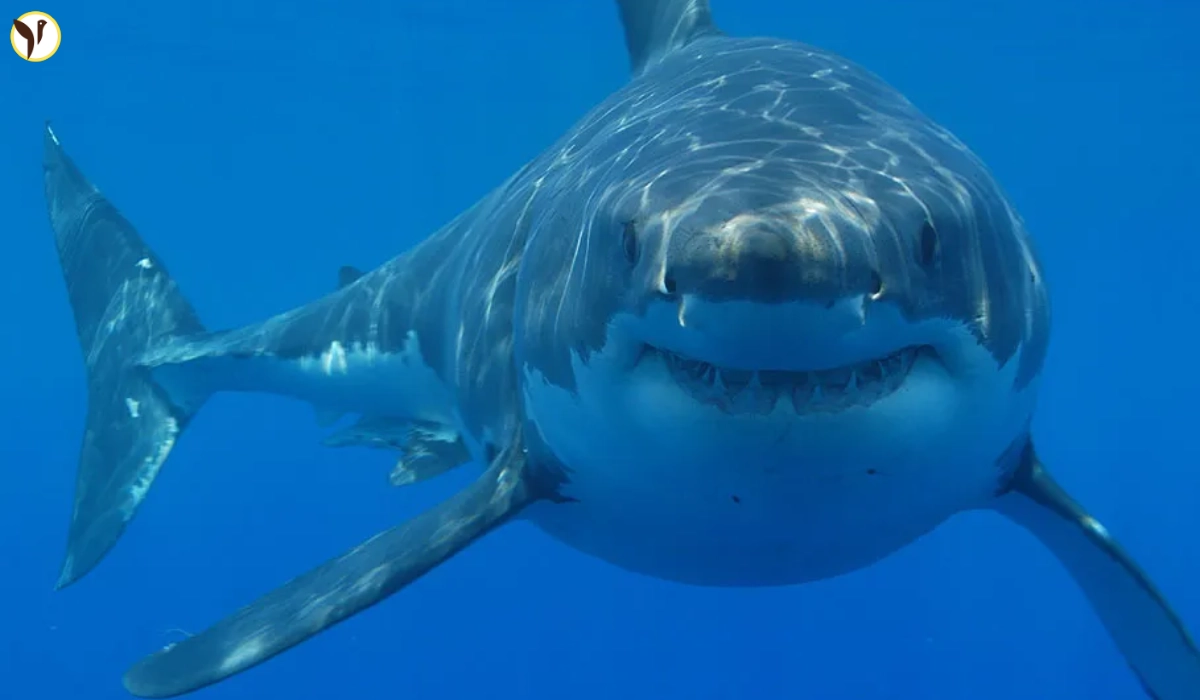A massive great white shark named Contender has been tracked off the coast of North Carolina, exciting marine researchers and sparking public interest. Measuring about 14 feet long and weighing nearly 1,650 pounds, Contender is one of the largest sharks ever tagged in the Atlantic Ocean.
He was first tagged earlier this year by OCEARCH, a research organization that studies ocean life. The tagging took place near the border of Florida and Georgia. After weeks of silence, the shark’s satellite tag pinged on June 7 near Pamlico Sound, signaling that Contender is on the move again.
Experts say this is part of a natural migration pattern. Great white sharks often travel thousands of miles along the Atlantic Coast every year. They move northward in the summer to find cooler water and a steady supply of food, mainly seals and large fish.
Contender was first tagged earlier this year near the Florida-Georgia border by scientists with OCEARCH, a nonprofit research group focused on ocean wildlife. Since then, he has been on the move, likely searching for cooler waters and following prey such as seals and fish.
OCEARCH uses satellite tracking to study shark movements in real time. This data helps scientists learn more about the sharks’ habits, migration routes, and feeding grounds. It also improves public safety by identifying where sharks are more likely to appear during different times of the year. Understanding these patterns is key to protecting both sharks and people.
🦈 #BREAKING: Contender, the largest great white ever recorded in the Atlantic (14 ft, 1,653 lb), has resurfaced near NC beaches! Tagged in Jan 2025, this giant shark disappeared from trackers for months before reappearing #OCEARCH #SharkWeek pic.twitter.com/Msnd0RiS33
— Sunstone Reels (@SunstoneReels) June 13, 2025
Shark Sightings Increase in the Northeast as Populations Grow
Along with Contender’s journey, there has been a rise in great white shark sightings in the northeastern U.S., especially around New England and the Gulf of Maine. In May, beachgoers near Nantucket, Massachusetts, reported seeing signs of shark activity, including a seal with visible bite marks found near the shore.
Experts say these sightings are not unusual anymore. The number of great white sharks in the region is going up, mostly because the seal population has grown. Seals are a major food source for sharks, so their presence naturally attracts more predators.
Conservation efforts have also played a role. Over the past few decades, laws protecting marine animals have helped shark numbers rebound. What was once a rare sight in the Gulf of Maine is now becoming more routine each summer.
Still, experts remind people to stay alert, especially in waters where seals are present. Simple safety tips can make a big difference:
-
Avoid swimming near seals or schools of fish
-
Stay close to shore
-
Swim in groups rather than alone
-
Always follow local beach safety alerts
Although shark attacks remain very rare, being cautious helps everyone enjoy the ocean more safely.









